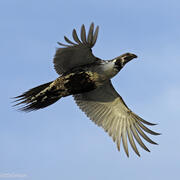Landscape Management Research Program
WERC scientists study landscape level change and other environmental threats to ecosystems that provide for wildlife and humans alike. Our research programs inform the recovery of ecosystems such as the nearshore marine environment, coastal marshes, wetlands, forests, Pacific islands, arid deserts, and the sagebrush steppe. Ecosystem-level research is conducted in particular on National Parks, Bureau of Land Management and Department of Defense lands, National Wildlife Refuges, and State lands, bays, and interior and coastal waters The projects below offer a closer look into WERC studies informing ecosystem management.













